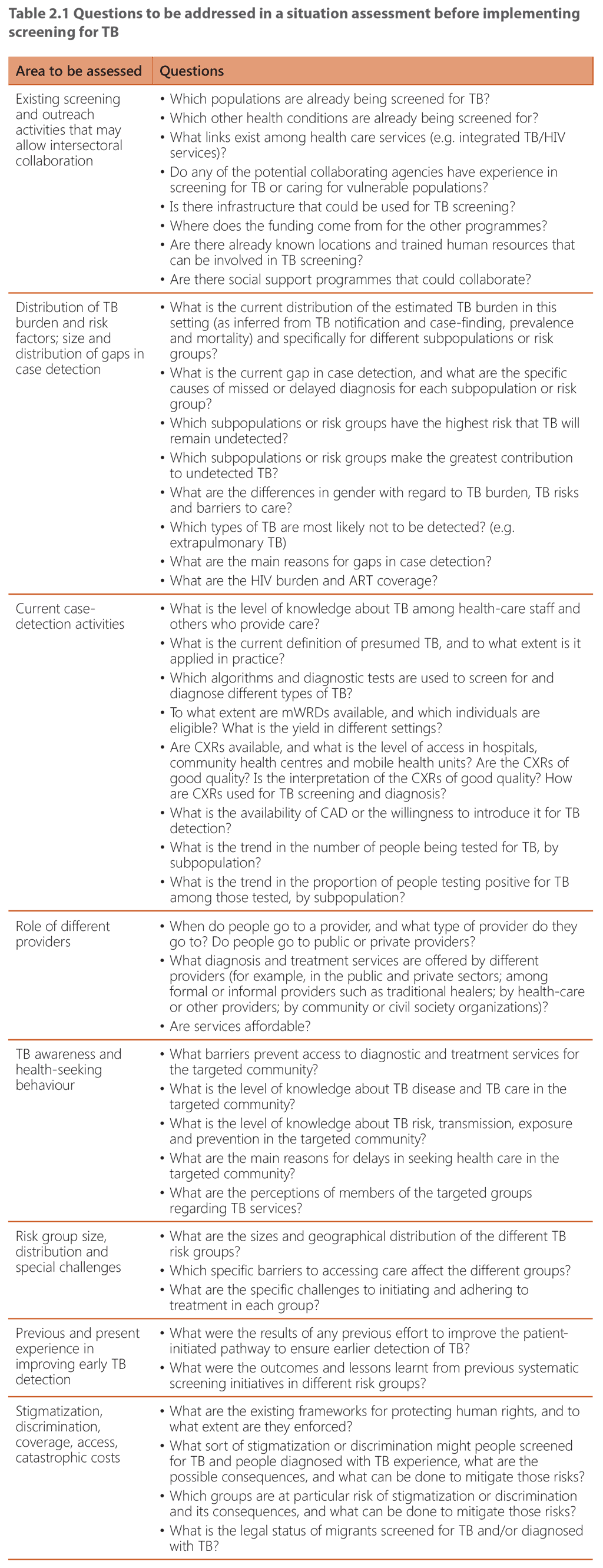Book traversal links for 2.2 Assessing the situation
The epidemiology of TB in each setting and the social and the health-system contexts will inform decisions on a TB screening strategy, including how risk groups are prioritized, which screening approach to choose and whether screening of specific risk groups is feasible. Therefore, before embarking on detailed planning, a baseline assessment of the following features should be undertaken:
- the existing screening and outreach activities, to assess the potential and readiness for intersectoral collaboration (for details, see 2.2.1);
- the societal context, to assess whether screening in specific communities or risk groups would be feasible, acceptable and valuable to the community (for details, see 2.2.2);
- the epidemiology of TB, to identify gaps in case detection, current case-finding activities and the size and distribution of risk groups that might be targeted for screening (for details, see 2.2.3);
- the national TB programme and the general health-care system, including the private health sector and other nongovernmental providers, to assess their preparedness for screening and their capacity to manage a potential increase in evaluation, diagnosis, monitoring and treatment of patients with TB, providing TPT and referring people with symptoms of other respiratory ailments or health conditions identified during TB screening (for details, see 2.2.4);
- health-care coverage and access to health services, to determine whether all people diagnosed with TB will have equitable access to high-quality care (for details, see 2.2.5); and
- protection from stigmatization, discrimination and harm, to ensure that people do not experience negative consequences from screening or any eventual TB diagnosis and its implications for the rights to employment, education and freedom of movement, among others (for details, see 2.1.6).
The specific questions to be addressed in a situation assessment are listed in Table 2.1 Different methods may be used to answer these questions, including analysis of existing data, literature reviews, site visits and interviews.

 Feedback
Feedback